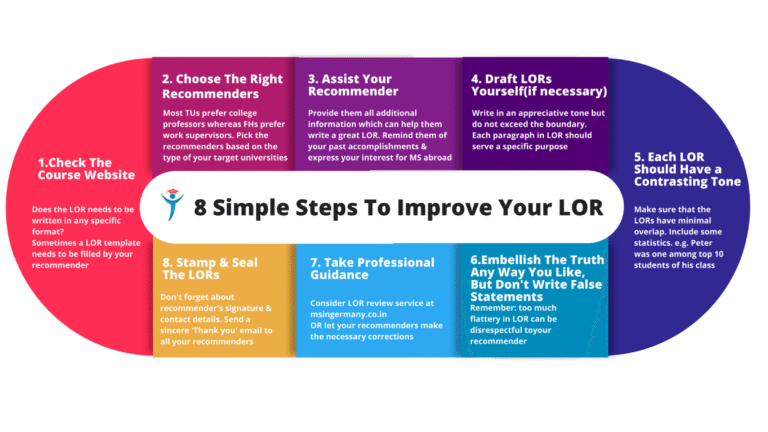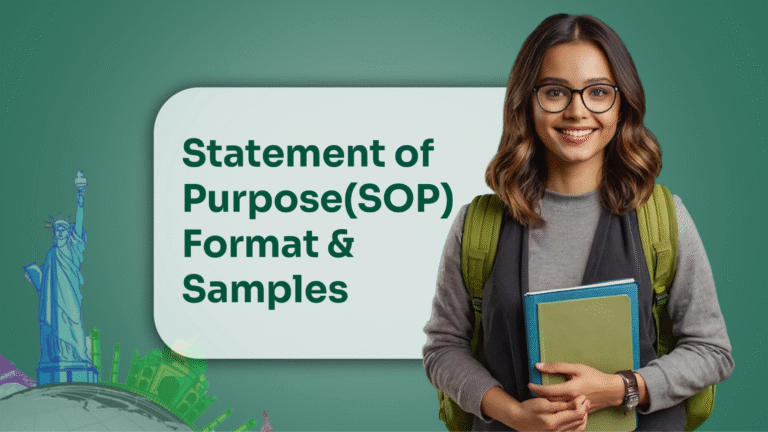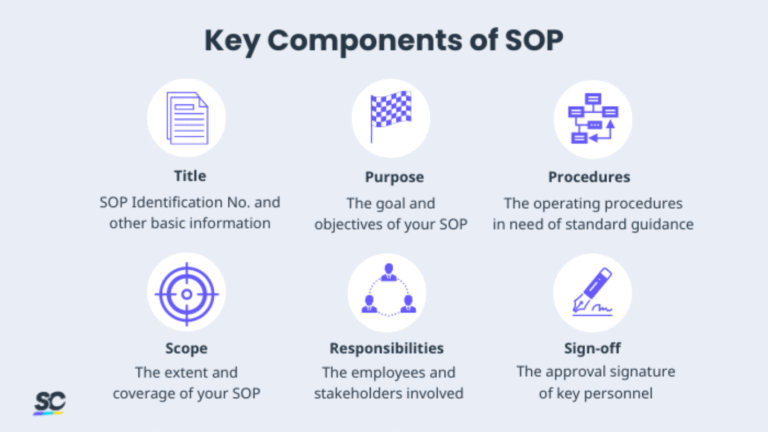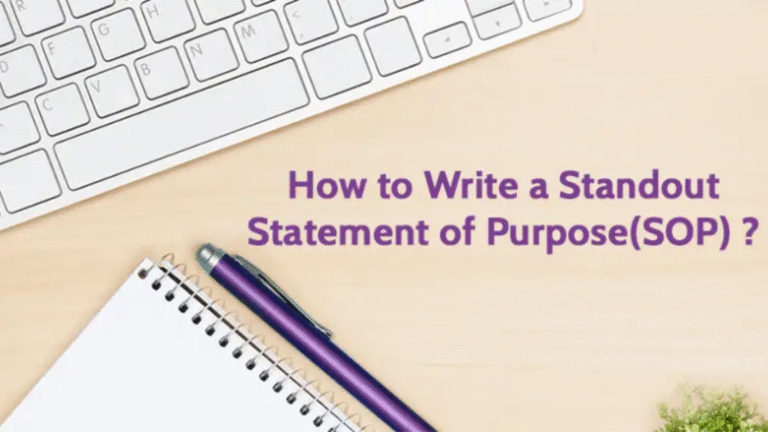Study Abroad Consultants In Delhi
How to Build a Perfect SOP & LOR for 2025 Admissions

Applying for admissions to universities abroad in 2025 is no easy job. It is an arduous process, there is a great deal of competition, and multiple layers to your application are significant. Universities around Canada, Australia and the United States receive thousands of applications every year. Most of the applicants present strong academic records, high tests scores and gps, plus some impressive extracurriculars. Admissions officers are not just glancing at these figures to determine worthiness; they want to know who the person is attached to the numbers.
Now there are two primary documents that will play a large role in your application: The Statement of Purpose (SOP) and The Letters of Recommendation (LORs). These two documents, combined, provide a narrative description of who you are, what your passions are and why you are the right candidate. The SOP is your opportunity to describe to admissions officers your story using your voice, whilst the LORs are an independent third party signifying your ability and your character. Performed properly, these documents can distinguish you from your competitor.
Why SOP and LORs Matter for 2025 Admissions
You might think grades, test scores, and work experience are enough to get into a top program, but consider it from the admissions officer’s view. They read application after application with very similar qualifications. The distinguishing feature from one student to another is almost always the story they tell and supporting evidence.
The SOP is an avenue to tell your story. It will articulate your academic history, professional experiences, motivations for applying, and aspirations. It will also preemptively answer questions like:
– Who are you beyond your GPA and standardized test scores?
– hat excites you about your field of study?
– Why is this the time in your life to apply for this program?
– How does this program help you achieve your aspirations?
The LORs will give your story more credibility regarding the claims you made. LORs are written by faculty, employers, or mentors who have seen you in action and know what developments you made while working with them. They can speak to your character, your abilities, and your potential through their lenses. While the SOP is your voice, and something you could have written for a different applicant, the LORs are an echo of your story.
Together, they form a 360-degree picture of you as an applicant—your motivation, ability, and potential for success. That’s why universities place such a heavy emphasis on them.
Understanding the SOP for 2025 Admissions

The Statement of Purpose, frequently referred to as the SOP, is something more than an essay. It is a highly structured personal statement that discusses your educational history, work experience, interests, and aspirations that connects to the program you are applying to.
Many students mistakenly think of the SOP as either a CV in essay form or some fanciful piece of creative writing. In actuality, a strong SOP is somewhere in the middle—a quality SOP will be well organized and truly informative, and also personal and engaging.
You can think of your SOP to balance your past experiences with your future goals. The SOP should clarify how your academic experience and professional tracking have prepared you for this next step in your career, help us understand why you have chosen this program and university, and then help us think about where directionally you see yourself after graduation.
Key Components of a Strong SOP
Crafting a winning SOP involves more than just stringing together achievements. It requires storytelling, reflection, and strategy. Below are the key components that make an SOP impactful:
1. A Captivating Introduction
First impressions are impactful. Admissions officers frequently review hundreds of applications and SOPs in quite a brief time. If your introduction is boring or a cliché, it’s easy for them to lose interest in your statement of purpose. Instead, you should avoid opening lines like “I have always been interested in…”. You could open with a personal story, a defining moment, or a thoughtful question.
Weak Opening: “Since childhood I have been interested in management.”
Strong Opening: “When I was chosen to be the president of my university’s entrepreneurship club during its most difficult year, I learned that my interest in management was, in fact, about resilience.”
The second example engages the reader and sets up the remainder of the essay.
2. Academic Background
In this section, please emphasize your educational path and stories that pivoted your academic interest. Instead of presenting just grades and courses, talk about how some subjects, projects, or pieces of you research impacted your decision to pursue a program.
If you are applying for a Master’s in Finance program, for example, do not simply state that you took courses in accounting and/or economics. Explain how a project on financial modeling built your curiosity and encouraged you to pursue advanced education.
For a deeper understanding of program options, check out our guide on Pursuing Masters in Management (MiM) Abroad
3. Professional Experience and Skills
If you have any applied work or internship experience, this is your opportunity to make connections to your academic objectives. Describe your responsibilities, but don’t just list your duties. Focus on the process of learning to help you connect your experience with your future goals.
For example:
Instead of: “I worked as a marketing intern where I managed campaigns.”
Use: “As a marketing intern, I was able to convert data insights into actionable targeted strategies that improved campaign performance, and it helped spark my interest in researching consumer behavior.”
By focusing on skill and learning, rather than duties, you demonstrate depth and reflection.
4. Motivation for the Program

This section is the core of your Statement of Purpose. You must articulate clearly why you are seeking this program in 2025. What interests you about this discipline? Why is this the right moment for you in your career or academic journey?
How does this program fit into your aspirations? Using generic phrases such as “I want to deepen my understanding” will be unproductive. Instead, connect your hopes and motivations to your past and the future.
For example: “I would like to pursue a Master’s in Data Science because during my undergraduate research course in machine learning I realized the potential of data to help solve complex real-world challenges. I was interested in the focus on applied research in a program, as it will help me build knowledge and expertise in a field that I will later leverage to generate AI-based healthcare solutions.”
5. Why This University
Admissions officers want to see what attracts you to their program. Generic flattery (“Your school is prestigious”) won’t cut it. Rather, you should look up and specifically cite a few courses, professors, research labs, or experiences unique to that program—ideally, opportunities that align with your interests.
For instance, the following example is clear as a professional way to integrate your interests and the opportunity available in the focus institution: “I am particularly excited about Professor James Smith’s research on behavioral economics because it mirrors my own academic interests in decision-making under uncertainty.
” This conveys that you have done your research and are excited about what this university has to offer, engaging with their program specifically.
6. Career Goals
Admissions committees seek students who are ambitious and who have ideas about their future. Outline your short-term and long-term goals for the admissions committee. Be specific about your goals, and make sure you are realistic regarding your goals, and make them relate to the purpose of your program of choice.
For Example: Short-term: “After I graduate, I want to work as a data analyst for a global consulting firm in an opportunity where I can apply my skills in real business situatiAnswerons.” Long-term: “I eventually want to begin a startup that is based on research that examines and utilizes AI applications for improved healthcare access.”
This demonstrates that you have an idea and a purpose.
Check Harvard’s official tips on writing SOP & LOR for graduate school applications.
7. A Memorable Conclusion
Conclude your SOP with a passionate and lasting close that demonstrates confidence in your dedication and excitement. A strong ending conclusion makes a positive and long-lasting impression on the admissions officer.
Example: “I am convinced that my academic background, professional experiences, and passion to learn make me an excellent candidate for your program. I am excited to contribute to and develop in your amazing community while preparing for a career that creates an impact.”
Common Mistakes to Avoid in SOP Writing

Numerous remarkable students fail to stand out due to obvious mistakes in their SOP. Here are a few potential errors:
Being overly broad: Avoid vague statements such as “I am hardworking and passionate.” Certainly, everyone says that, so find ways to be specific.
Copy-pasting references: Universities can detect recycled SOPs. Authenticity is essential.
Being overly complicated: It should be understandable to someone outside your field.
Disrespecting guidelines: Follow the word count and formatting rules that the university gave.
Exaggerating or dishonest: Admissions staff can see where you aren’t being honest, and they can see your inconsistencies.
Too little structure: an SOP that haphazardly hops from topic to topic can be disorienting. Structure helps to keep your story interesting.
Don’t forget to proofread: Involving possible grammatical mistakes or typos could leave your reader with the impression of negligence.
SOP vs LOR: The Key Difference in Paragraph Form
Even though the SOP and LORs are presented together in a package, each serves a different purpose. You wrote the SOP, which conveys your own story – your motivations, your experience, your purpose. It is aspirational, and self-reflective. The LORs, on the other hand, were written by professors, mentors, or supervisors who have seen your work. They are objective, external endorsements of your capabilities and character. While the SOP allows you to speak directly to the admissions committee LORs offer endorsements from credible individuals. Together the SOP and LORs balance each other out – the SOP demonstrates your self-perception and the LORs prove how others perceive your efforts.
FAQs on SOP & LOR for 2025 Admissions
Q1. How long should my SOP be?
Most universities recommend between 800 and 1200 words. Always check specific guidelines, as some programs may have stricter limits.
Q2. Can I reuse the same SOP for multiple universities?
You can reuse the core structure, but every SOP must be customized. Mention specific courses, faculty, or opportunities at each university.
Q3. What if my recommender is too busy and asks me to draft the LOR?
This happens often. If so, draft a simple version highlighting your skills and experiences, then let them refine it. Avoid making it sound like your SOP—keep the tone objective.
Q4. Should I discuss weaknesses in my SOP?
Only if they are relevant and you can show growth. For instance, if your GPA dipped due to personal challenges, briefly explain and highlight how you overcame it.
Q5. How many LORs are usually required?
Most programs ask for 2–3 LORs. Some may specify whether they should be academic, professional, or a mix. Always follow the instructions carefully.
Final Thoughts on SOP & LOR for 2025 Admissions
As you prepare for 2025 admissions, it’s important to remember that the SOP and LORs are not a formality. The SOP allows you to communicate directly with the Admissions Committee, sharing your journey, explaining why you chose the program, and highlighting what you hope to achieve. Meanwhile, letters of recommendation reinforce your personal statement, summarizing your accomplishments and potential through the perspectives of credible individuals who have witnessed your abilities in action.
These could take weeks of thought, reflection, and ultimately drafting, but the benefits are also much larger than the draft. So start early, be honest with yourself, and never rush through the process. Solicit feedback on your pieces, polish your writing as much as you can, and be thoughtful when approaching potential recommenders for letters of recommendation.
If you craft an excellent SOP and compelling letters of recommendation, you’ll truly stand out among other applicants, and ultimately gain admission to the program of your dreams and beyond!
